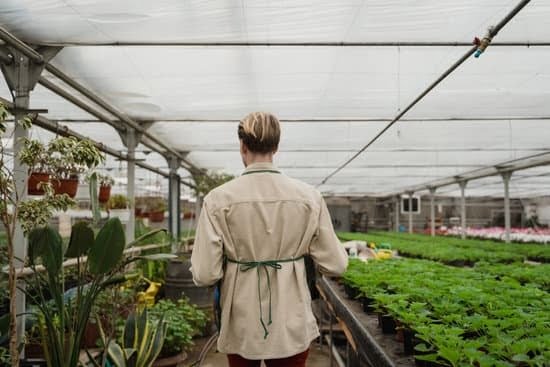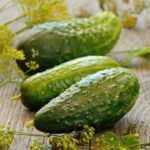Are you interested in growing your own vegetables but don’t have a backyard or garden space? Look no further. This article will explore the world of vegetable gardening in pots, providing you with creative ideas and essential tips for successful container gardening.
With the rise of urban living and limited outdoor spaces, more and more people are turning to container gardening as a convenient and accessible way to grow fresh produce. Whether you’re a seasoned gardener or a beginner, vegetable gardening in pots offers a plethora of benefits and opportunities for experimentation.
The trend of growing vegetables in containers has gained popularity due to its flexibility and adaptability to various living situations. From small city balconies to spacious porches, anyone can partake in the joy of nurturing plants and harvesting their own home-grown vegetables. In this section, we will delve into the reasons why more individuals are embracing the versatility of vegetable gardening in pots, along with the numerous advantages it offers over traditional garden beds.
As we embark on this journey into the world of container gardening, let’s explore the benefits of this innovative approach to vegetable cultivation. We will also discuss some of the best vegetables suited for container gardening, as well as provide tips on selecting the right pots and containers for your specific needs. By the end of this article, you’ll be equipped with all the knowledge and inspiration needed to kick-start your own thriving vegetable garden in pots.
Benefits of Vegetable Gardening in Pots
One of the major benefits of vegetable gardening in pots is the flexibility it offers. Whether you have a small outdoor space, a balcony, or even just a sunny window sill, container gardening allows you to grow your own vegetables regardless of the size of your living area.
This makes it an accessible option for urban dwellers and those with limited outdoor space. Additionally, container gardening also enables you to move your plants around to optimize sunlight and protect them from harsh weather conditions.
Another advantage of vegetable gardening in pots is the ability to control the growing environment more easily. With pots and containers, you can tailor the soil mixture to suit the specific needs of each type of vegetable, ensuring optimal growth and yield. Furthermore, this method allows for better pest and disease management as you can isolate affected plants more effectively compared to traditional in-ground gardening.
In addition, container gardening often requires less maintenance than traditional garden beds. Weeding, watering, and overall plant care are generally more manageable when vegetables are grown in pots. This makes it a great option for beginners or those with busy schedules who still want to enjoy the rewards of harvesting their own homegrown produce.
By embracing vegetable gardening in pots, individuals can experience these various benefits while producing their own fresh and organic vegetables right at home. Whether for practicality or versatility, container gardening is truly an ideal approach for anyone interested in growing their own food within any living environment.
Best Vegetables for Container Gardening
When it comes to vegetable gardening in pots, choosing the right vegetables to grow is essential for a successful harvest. Not all vegetables thrive in container gardens, so it’s important to select varieties that are well-suited for this type of growing environment. Fortunately, there are plenty of options to choose from when it comes to growing vegetables in pots.
Leafy Greens
Leafy greens such as lettuce, spinach, kale, and Swiss chard are excellent choices for container gardening. These vegetables have shallow root systems and can be easily grown in small to medium-sized pots. They also tend to do well in partial shade, making them suitable for balconies or patios with limited sunlight.
Tomatoes
Tomatoes are a favorite among container gardeners due to their productivity and versatility. Compact or dwarf tomato varieties are particularly well-suited for pots, as they require less space and support compared to traditional indeterminate varieties. With the right care and support, tomatoes can thrive in containers and provide a bountiful harvest throughout the season.
Herbs
In addition to traditional vegetables, herbs are also a great option for container gardening. Herbs like basil, parsley, cilantro, and mint not only add flavor to your dishes but also thrive in pots. They can be grown together with other vegetables or even on their own, making them a versatile choice for any container garden.
By choosing the best vegetables for container gardening and providing them with proper care and maintenance, you can enjoy a bountiful harvest of fresh produce right from your own patio or balcony. With the right selection of vegetables and some creativity in arranging your containers, you can create a thriving vegetable garden no matter how much outdoor space you have available.
Tips for Choosing the Right Pots and Containers
When it comes to successful vegetable gardening in pots, choosing the right containers is crucial. The type and size of the pots or containers you use can greatly impact the health and productivity of your plants. One of the first things to consider when selecting pots for your container garden is the material.
Terracotta and ceramic pots are popular choices due to their aesthetic appeal, but they can also dry out quickly and may not be the best option for hot climates. Plastic pots, on the other hand, are lightweight and retain moisture better, making them a practical choice for many gardeners.
The size of your pots is also an important factor to consider. Larger pots provide more space for root growth and allow for better water retention, which can be particularly beneficial for vegetables that require a deeper root system or those that need consistent moisture. Additionally, it’s essential to choose containers with good drainage to prevent waterlogged soil, which can lead to root rot and other issues.
Another consideration when choosing pots for your vegetable garden is portability. If you live in a climate with extreme temperatures or inclement weather, having the ability to move your containers indoors or into a more sheltered area can help protect your plants from damage. Additionally, lightweight materials such as plastic or resin make it easier to reposition your containers as needed.
In summary, when selecting pots and containers for your vegetable garden, it’s important to prioritize factors such as material, size, drainage, and portability. Considering these aspects will help ensure the success of your container garden and provide an ideal growing environment for your vegetables.
| Aspect | Consideration |
|---|---|
| Material | Choose based on climate and moisture needs |
| Size | Select larger containers for better root growth and water retention |
| Drainage | Ensure containers have proper drainage to prevent waterlogging |
| Portability | Consider lightweight materials for ease of movement |
Essential Supplies for Successful Vegetable Gardening in Pots
When starting a vegetable garden in pots, it’s important to have the right supplies to ensure the success of your plants. From soil to watering tools, these essential supplies are necessary for a thriving container garden.
Quality Potting Mix
One of the most important supplies for successful vegetable gardening in pots is a high-quality potting mix. This mix provides the necessary nutrients and drainage for your plants to grow healthy and strong. Look for a mix specifically designed for containers, as they often contain ingredients like perlite and vermiculite that aid in water retention and aeration.
Appropriate Containers
Choosing the right pots or containers is crucial for the health of your vegetable plants. Opt for containers that are large enough to accommodate the root systems of your chosen vegetables. Additionally, ensure that your pots have drainage holes to prevent waterlogging, which can lead to root rot.
Fertilizer and Compost
To supplement the nutrients in your potting mix, consider using a balanced fertilizer specific to vegetable plants. Organic compost is also beneficial for adding nutrients to the soil and promoting healthy growth. Both fertilizer and compost should be used according to package instructions and based on the needs of your specific vegetables.
By ensuring you have these essential supplies on hand, you can set yourself up for successful vegetable gardening in pots. Providing your plants with quality soil, proper containers, and necessary nutrients will help promote vigorous growth and bountiful harvests.
How to Set Up and Care for Your Container Garden
When it comes to vegetable gardening in pots, setting up and caring for your container garden is crucial to ensure the success of your plants. Here are some essential steps and tips to follow when creating and maintaining your own container garden:
- Choose the Right Location: Select a spot that receives plenty of sunlight for your container garden. Most vegetables require at least 6-8 hours of direct sunlight per day.
- Selecting the Right Soil: Use high-quality potting mix or soil specifically formulated for containers. Ensure that the soil has good drainage to prevent waterlogged roots.
- Container Selection: Choose pots or containers that are large enough to accommodate the root systems of your vegetables. Consider the mature size of the plants when selecting the container size.
Once you have set up your container garden, it’s important to care for it properly to ensure healthy growth and abundant harvests. Here are some care tips for maintaining your vegetable garden in pots:
- Watering: Check the moisture level of the soil regularly and water as needed. Container gardens may require more frequent watering, especially during hot and dry periods.
- Fertilizing: Use a balanced fertilizer formulated for vegetables to provide essential nutrients for healthy growth. Follow recommended application rates on the fertilizer label.
- Pest and Disease Control: Monitor your plants for signs of pests and diseases, and take appropriate actions such as hand-picking pests or using organic pest control methods.
By following these steps and care tips, you can set up and maintain a thriving vegetable garden in pots. With proper attention and care, you’ll be able to enjoy a bountiful harvest of fresh, home-grown vegetables from your container garden.
Creative Ideas for Vertical and Hanging Vegetable Gardens
When it comes to vegetable gardening in pots, there are plenty of creative ideas to explore beyond traditional container gardening. Vertical and hanging gardens offer a space-saving and visually appealing way to grow your favorite vegetables. One popular option is the use of trellises or garden obelisks to support climbing plants such as tomatoes, cucumbers, peas, and beans. These structures not only provide vertical support but also add an aesthetic element to your garden.
Another creative idea for vertical gardening is the use of wall-mounted planters or hanging baskets. These are excellent options for growing herbs, lettuces, and small root vegetables like radishes and carrots. Wall-mounted planters can turn any blank wall into a thriving vegetable garden, while hanging baskets can be suspended from pergolas, overhangs, or hooks attached to fences or walls.
For those with limited space, consider utilizing tiered plant stands or shelving units to create a vertical vegetable garden. This allows you to maximize your growing area without taking up valuable floor space. Additionally, using repurposed objects such as old pallets, wooden crates, or gutter systems can also make for unique and resourceful vertical gardening solutions.
Aside from the practical benefits of saving space, vertical and hanging vegetable gardens can also help protect your plants from pests and disease by keeping them off the ground. They also enhance air circulation around the plants which can contribute to healthier growth. With a wide array of creative ideas available, the possibilities for designing a unique and productive vertical or hanging vegetable garden are endless.
| Vegetable Gardening Idea | Description |
|---|---|
| Trellises & Garden Obelisks | Provide support for climbing plants like tomatoes and cucumbers while adding visual appeal. |
| Wall-Mounted Planters & Hanging Baskets | Great for herbs, lettuces, radishes, carrots; turn blank walls into thriving gardens. |
| Tiered Plant Stands & Repurposed Objects | Maximize growing area without taking up floor space; repurpose items like pallets and gutters. |
Troubleshooting Common Issues in Container Vegetable Gardening
Container vegetable gardening can be a convenient and rewarding way to grow your own produce, but it’s not without its challenges. Here are some common issues that may arise when practicing vegetable gardening in pots, along with some helpful solutions:
1. Overwatering or underwatering: It can be easy to overwater or underwater your plants when they’re in containers. To prevent overwatering, make sure your pots have drainage holes at the bottom to allow excess water to escape. For underwatering, check the soil regularly and water whenever it feels dry about an inch below the surface.
2. Root-bound plants: When the roots of your plants become root-bound, they can’t absorb nutrients effectively and may suffer from stunted growth. To prevent this issue, choose pots that are large enough for the mature size of your vegetables and consider repotting them into larger containers as they grow.
3. Pests and diseases: Just like traditional garden beds, container gardens are also susceptible to pests and diseases. Keep an eye out for signs of pest infestations or diseases such as yellowing leaves or unusual spotting. Consider using natural pest control methods and disease-resistant varieties of vegetables to prevent these issues.
4. Nutrient deficiencies: Since containers have limited space for soil, it’s important to replenish nutrients regularly through fertilization. Use a balanced fertilizer specifically formulated for vegetables according to package instructions to ensure that your plants have all the necessary nutrients for healthy growth.
By being aware of these common issues and implementing proper care techniques, you can troubleshoot potential problems and enjoy a successful vegetable gardening experience in pots.
Conclusion
In conclusion, vegetable gardening in pots offers a versatile and flexible way to grow your own produce, even with limited space. With the rise of container gardening, more and more people are discovering the joy and satisfaction of growing their own vegetables right on their porch, patio, or balcony. The benefits of this method are numerous, from convenience and accessibility to the ability to customize your garden to suit your needs and preferences.
Choosing the right vegetables for container gardening is crucial for success. With the right selection of plants and proper care, you can enjoy a bountiful harvest of fresh, homegrown produce. Whether you’re interested in tomatoes, peppers, herbs, or leafy greens, there are plenty of options to explore for your pot-based vegetable garden.
When it comes to setting up and caring for your container garden, attention to detail is key. From selecting the right pots and containers to providing adequate sunlight and water, every step contributes to the overall success of your vegetable gardening endeavors. By embracing creative ideas such as vertical and hanging gardens, you can maximize space while adding visual interest to your outdoor living area.
Frequently Asked Questions
Which Vegetables Are Best to Grow in Pots?
There are several vegetables that are ideal for growing in pots, including cherry tomatoes, peppers, lettuce, spinach, and radishes. These vegetables are well-suited to the limited space of a container and can thrive with proper care.
What Vegetables Grow Well Together in a Container?
Certain vegetables grow well together in a container due to their complementary growth habits and needs. For example, tomatoes, basil, and onions can be planted together as they have similar water and sunlight requirements. Similarly, carrots and lettuce make good companions as they don’t compete for space.
What Vegetables Go Together in a Planter?
When choosing vegetables to grow together in a planter, consider those that have similar growing conditions. For instance, pairing herbs like rosemary and thyme with root vegetables such as carrots and radishes can work well since these plants require similar soil moisture levels and sunlight exposure. By selecting compatible veggies, you can create a harmonious planting arrangement in your planter.

Welcome to my gardening blog! I am passionate about plants and enjoy sharing my knowledge and experiences with others. In this blog, I will write about everything related to gardening, from tips on how to get started to updates on my own garden projects.





